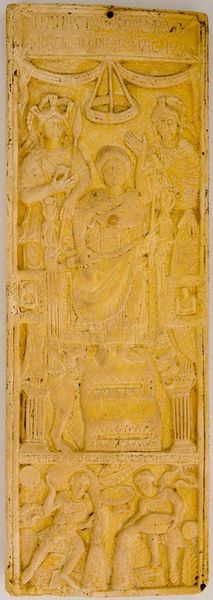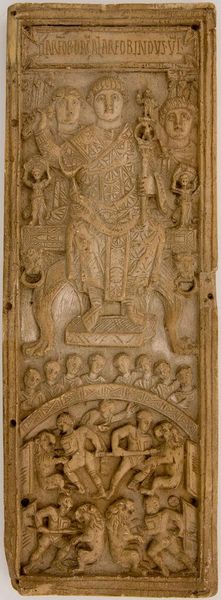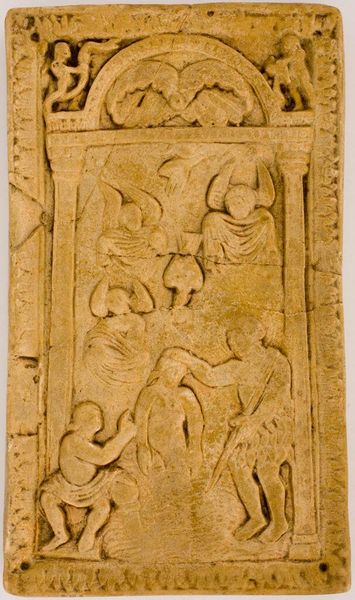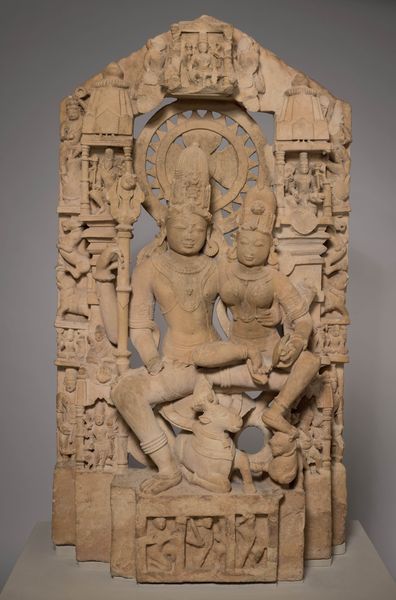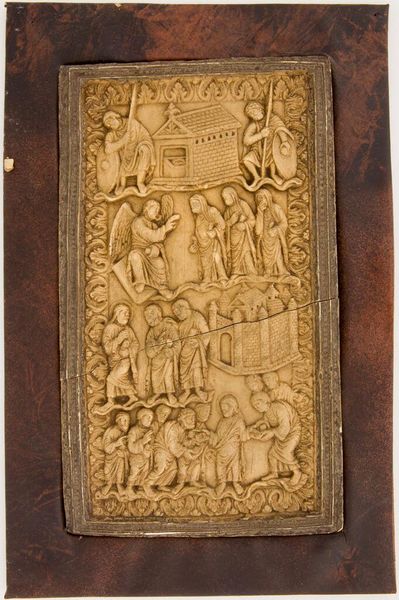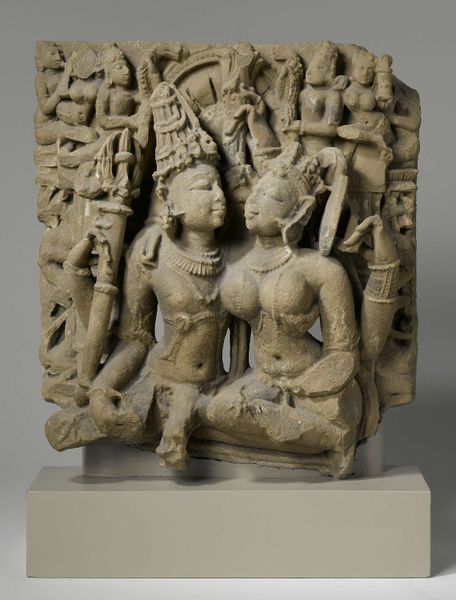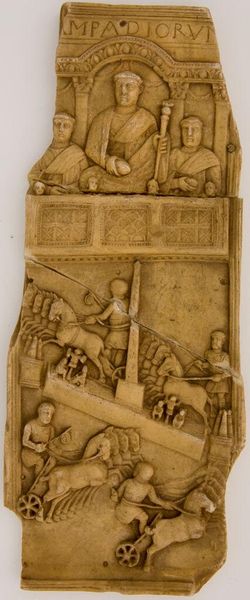
carving, relief, wood, architecture
#
african-art
#
natural stone pattern
#
carving
#
narrative-art
#
relief
#
figuration
#
geometric pattern
#
carved into stone
#
repetitive shape and pattern
#
repetition of pattern
#
wooden texture
#
intricate pattern
#
wood
#
pattern repetition
#
yoruba-art
#
layered pattern
#
repetitive pattern
#
architecture
Dimensions: 74 1/4 x 28 3/16 x 1 1/2 in. (188.6 x 71.6 x 3.81 cm)
Copyright: No Known Copyright
Editor: This is "Palace Door" by Dada Areogun, carved in wood, likely in the early 20th century. The relief carvings narrate what seem to be scenes of daily life, but there’s one scene with a figure riding a bicycle, which seems a bit out of place! How do you interpret this work? Curator: That bicycle is precisely the point, isn't it? It throws into stark relief the collision of tradition and modernity that defined early 20th-century Yoruba society. Areogun, through his work, gives us not just a scene of daily life but a commentary on cultural transformation. Consider the implications of representing indigenous life alongside this symbol of Western technology. Editor: So the bicycle isn't just a random addition? It’s there to tell us something? Curator: Exactly. Think about what the bicycle represented then – access, progress, perhaps even power. And consider who has access to that power. Areogun is situating Yoruba identity in this evolving landscape, negotiating tradition with the influx of new ideas. Does the door, as a threshold, symbolize more than just physical entry here? Editor: I see. It's a symbolic entry into a new era. So the door itself, then, is making a statement about change and transition, rather than simply depicting everyday life. Curator: Precisely. And note how he embeds social commentary within what appears to be traditional art forms. Areogun challenges the very notion of a fixed, unchanging Yoruba culture. The door isn’t just a functional object; it’s a dynamic, evolving statement about Yoruba identity in the face of globalization. What else strikes you about this intersection? Editor: The way the figures are depicted – a blend of traditional and modern styles, maybe? I'm also now thinking about who this door was meant for. Whose palace was it? Curator: Good questions. Who had the power to commission such a piece? Who controlled those thresholds, both physical and metaphorical? Reflecting on those questions adds more layers to our understanding of this complex work. Editor: This really reframes how I see the piece. It’s not just a historical artifact, it's a piece of social and political commentary, carved in wood. Curator: Precisely. Art like this demands we engage with it critically, seeing it as more than just aesthetically pleasing, but as active participants in broader social conversations.



